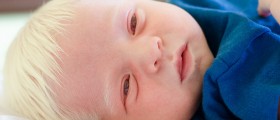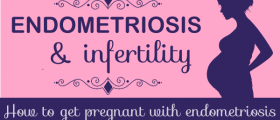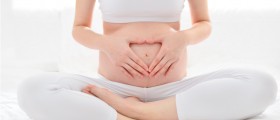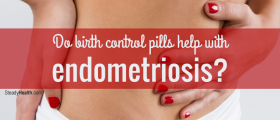
Endometriosis is a painful and chronic disease that affects as much as 5.5 million women in North America. It involves the cells of the endometrium, which is the lining of the uterus. Endometrium is normally found only inside the uterus and its role is to accommodate a fertilized egg. If the egg does not get fertilized, the endometrium sheds and becomes expelled through menstrual bleeding, along with the unfertilized egg.
In women who have endometriosis, the cells that make up endometrium travel through the fallopian tubes and settle outside the uterus, for example on the ovaries, on the bladder, fallopian tubes, ligaments supporting the uterus, lining of the pelvic cavity and other places inside it. Very rarely, endometrial tissue can be found in the lungs, in arms, legs, thighs and other parts of the body.
Endometriosis usually starts between ages of 25 and 30, but in many cases it develops as soon as the first menstrual period occurs.
Endometriosis is characterized by painful menstrual periods, pain in the pelvic area, in the lower abdomen and in the lower back, and also by pain during sexual intercourse and bowel movement. Problems like nausea, constipation, diarrhea, fatigue, painful urination and susceptibility to yeast infections are also seen in women with endometriosis.
Not all women experience the same severity and extent of the symptoms. For many women with endometriosis, the condition is practically asymptomatic, while others suffer severe pains during each menstrual period.
Endometriosis and efforts to conceive
One of the questions that inevitably arise after a woman has been diagnosed with endometriosis is whether she will be able to become pregnant with endometriosis. The opinions differ on this matter but many experts agree that endometriosis does reduce the chance of conceiving.
In addition, statistics say that 20 percent of women with endometriosis who are trying to conceive unfortunately will not succeed. Also, women with endometriosis are at higher risk of miscarriage than women who do not suffer from this condition.
Of course, this does not mean that women with endometriosis should not try to get pregnant. They still have an 80 percent chance of having a baby. It is recommended to talk to a doctor who will inform the patient about adjuvant methods, such as ovulation induction, which may help.
In women who are otherwise healthy and have regular ovulation and menstruation patterns, a method called washed intrauterine insemination can also improve pregnancy rates. The same goes for surgical incision of the diseased tissue and post-operative treatment with gonadotropin antagonists.
















Your thoughts on this
Loading...